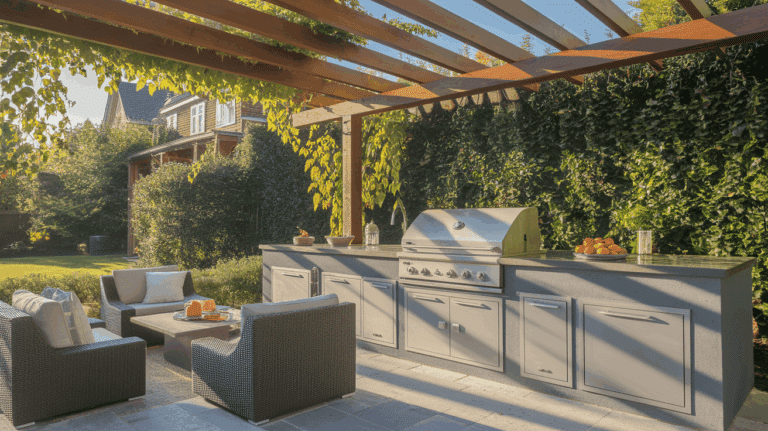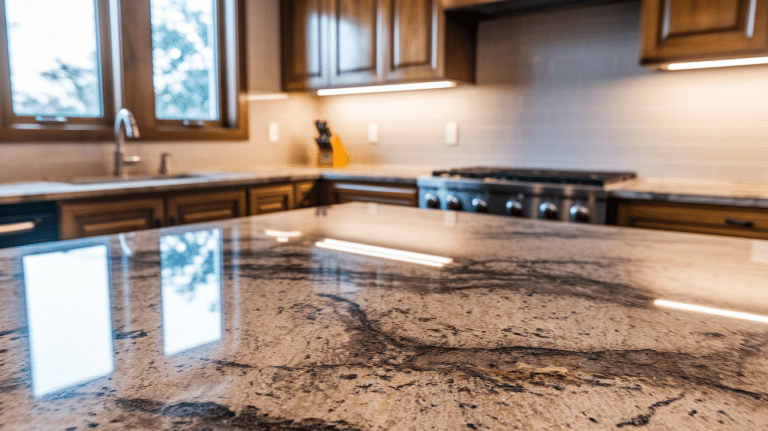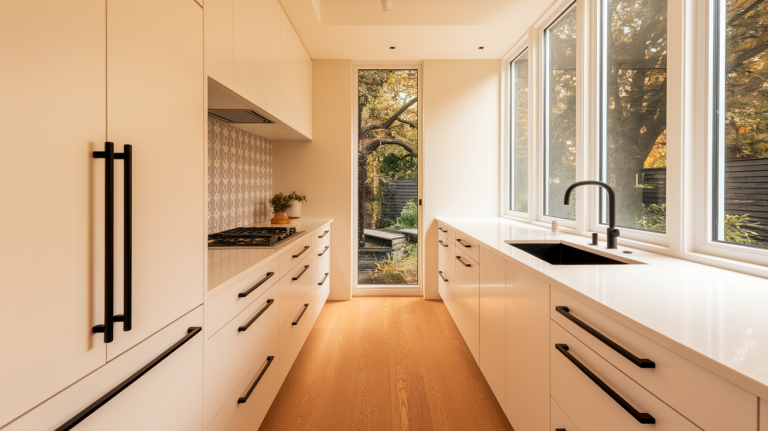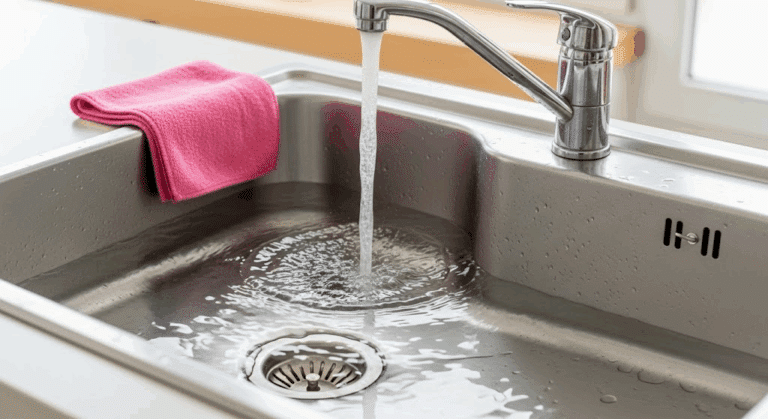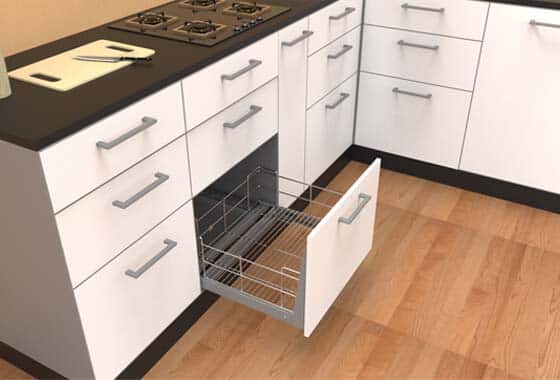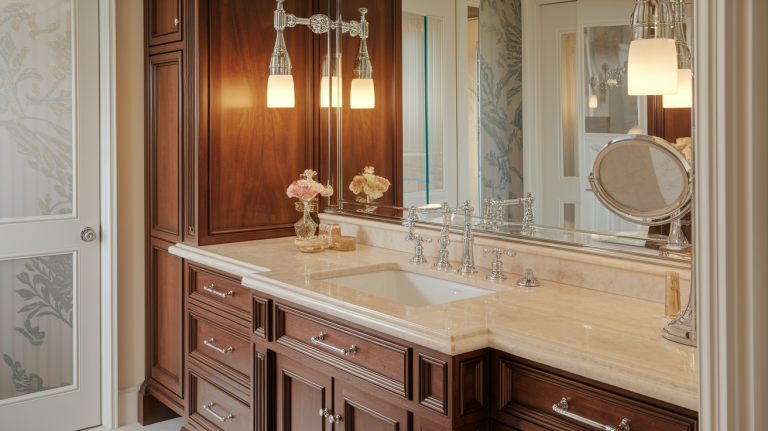Satin vs. Semi-Gloss Cabinets Finish: Key Difference
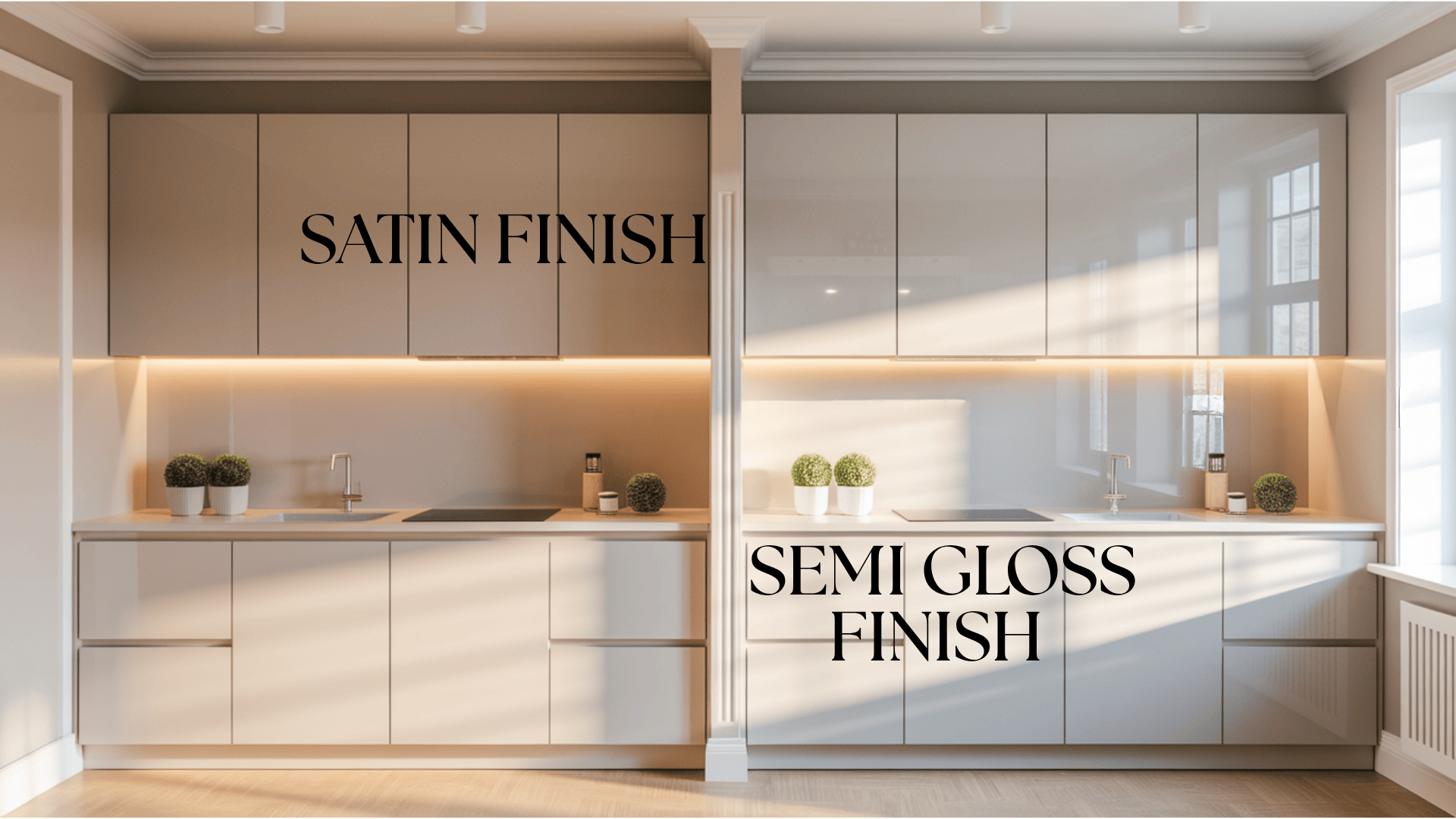
When choosing cabinet finishes, the decision between satin and semi-gloss can make a big difference in your kitchen’s look.
Many homeowners face this choice without knowing what sets these finishes apart or which might work better for their needs.
Both satin and semi-gloss options offer unique benefits and potential drawbacks. The finish you select affects not only how your cabinets look, but also how they withstand daily use, how easily they are to clean, and how well they match the rest of your home.
This blog will walk you through the key facts about both satin and semi-gloss cabinet finishes. You’ll learn what makes each finish special and how to pick the right one for your home.
By the end, you’ll have all the information you need to make an informed decision about your cabinets.
About Satin Finish
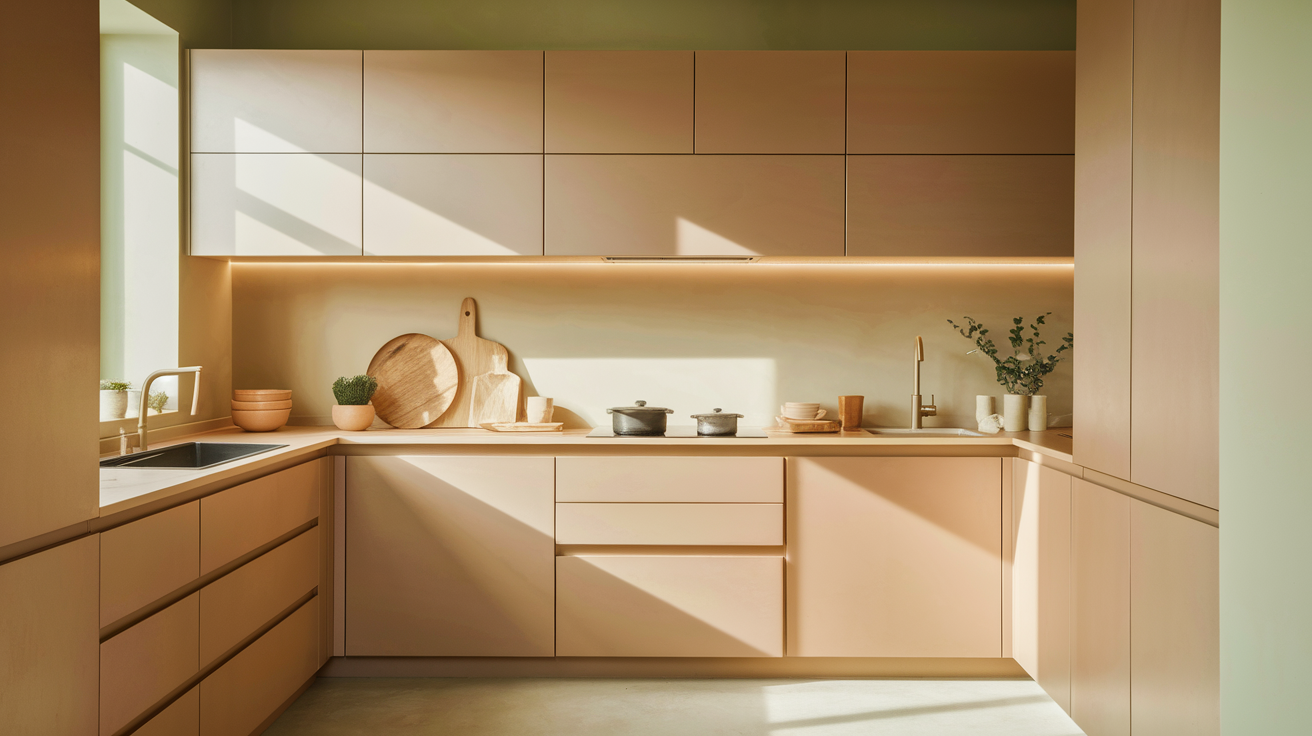
Satin finish gives cabinets a soft, gentle glow rather than a bright shine. This type of finish falls between matte and semi-gloss on the sheen scale.
When light hits satin-finished cabinets, they reflect some light but not as much as glossier options. The surface of satin cabinets feels smooth to touch and has a warm, welcoming look in kitchens and bathrooms.
Most paint brands offer satin options that contain just enough shine to add depth without creating glare. Many homeowners choose a satin finish because it hides small flaws well.
Unlike higher-gloss finishes, satin won’t highlight every tiny scratch or dent on your cabinet surfaces.
Cost Factor: Slightly cheaper per gallon
Best Use Case: Ideal for traditional, rustic, or cozy cabinet styles
| Pros | Cons |
|---|---|
| Hides small marks and imperfections | Not as easy to clean as glossier finishes |
| Provides a subtle, warm glow | May show fingerprints in high-use areas |
| Works well in most home styles | Can look dull in rooms with little natural light |
| Less glare than shinier finishes | Might need more frequent touch-ups |
| More forgiving during application | Not as moisture-resistant as semi-gloss |
| Good for older cabinets with flaws | May not stand out as much in your kitchen |
About Semi-Gloss Finish
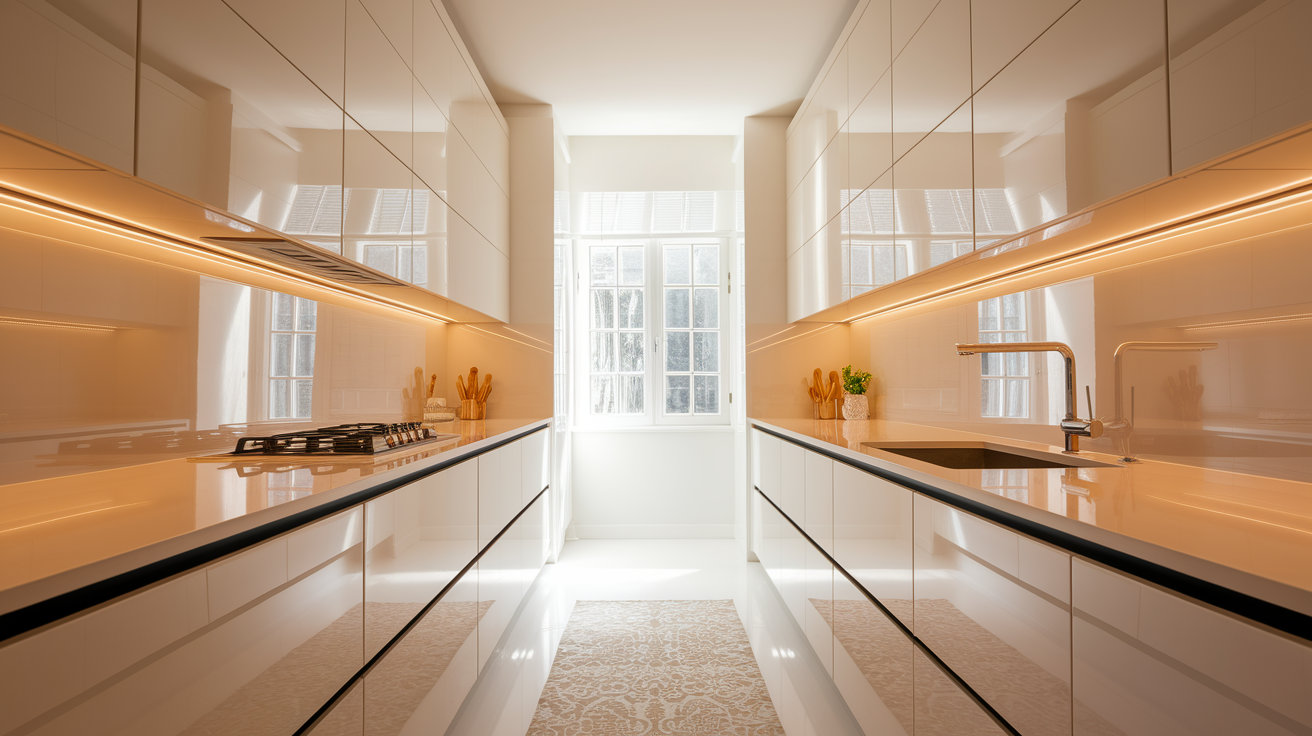
Semi-gloss finish creates a noticeable shine on cabinet surfaces. This finish sits higher on the sheen scale than satin, but remains below high-gloss options.
Cabinets with a semi-gloss finish catch and reflect more light in a room. The surface of semi-gloss cabinets appears smooth and somewhat shiny. This finish tends to make colors look richer and more realistic.
When used in kitchens and bathrooms, semi-gloss stands up well to moisture and frequent cleaning. Many people pick semi-gloss for busy areas because it creates a hard, durable surface.
The finish forms a tighter seal against water, food splatters, and other common kitchen messes.
Cost Factor: Typically $2–$5 more per gallon due to higher sheen and durability
Best Use Case: Great for modern, sleek, or high-traffic kitchens and bathrooms
| Pros | Cons |
|---|---|
| Very easy to clean and wipe down | Shows imperfections more than satin |
| Highly resistant to moisture | Can create glare in bright rooms |
| Makes colors look rich and bright | Highlights every bump and dent |
| Long-lasting durability | More challenging to apply evenly |
| Stands up well to scrubbing | Can look too shiny in some home styles |
| Reflects more light in dark spaces | Shows fingerprints and smudges clearly |
Best Finish for your Cabinet
A satin finish works well for most homes with a casual or warm aesthetic. It hides small flaws and looks soft yet polished. This option suits cabinets in less frequently used areas or spaces where a subtle look is desired.
Semi-gloss is the perfect choice for busy kitchens and homes with children. Its tough surface stands up to frequent cleaning and resists water damage better. The shinier look also helps brighten darker kitchens by reflecting more light.
For the most balanced approach, some homeowners use semi-gloss on lower cabinets that face more wear and tear, while opting for satin on upper cabinets.
This mix offers the best of both worlds – extra protection where needed and a softer appearance at eye level.
Common Mistakes You Need to Avoid
When applying cabinet finishes, even small errors can lead to disappointing results. Taking time to understand the process helps avoid wasted effort and materials.
Here are some common mistakes to watch for when working with satin and semi-gloss finishes:
- Skipping Proper Preparation: Failing to clean, sand, and prime surfaces leads to poor adhesion and peeling.
- Applying Thick Coats: Applying too much finish at once can cause drips, bubbles, and uneven drying.
- Forgetting to Sand Between Coats: Failing to complete this step prevents effective bonding between layers and results in a rough texture.
- Using the Wrong Brush: Choosing the incorrect tools can leave brush marks and result in an uneven finish.
- Rushing the Drying Time: Not allowing sufficient drying time between coats can compromise the final look and durability.
- Mixing Different Product Brands: Combining primers and finishes from different manufacturers can cause compatibility issues.
- Working in Poor Lighting: Poor lighting can hide flaws during application that become visible later.
Conclusion
Both options have their strengths – satin offers a subtle glow that hides flaws, while semi-gloss provides durability and easy cleaning.
Consider your kitchen’s lighting, the amount of traffic the area receives, and the look you prefer. Remember that satin works well for a warm, casual feel, while semi gloss adds brightness and protection.
For the best results, think about mixing both finishes as needed throughout your kitchen. Upper cabinets might benefit from the gentle look of satin, while lower cabinets could use the strength of semi-gloss.
Ready to update your kitchen? Contact a local cabinet professional today to receive samples of both finishes for your space.

